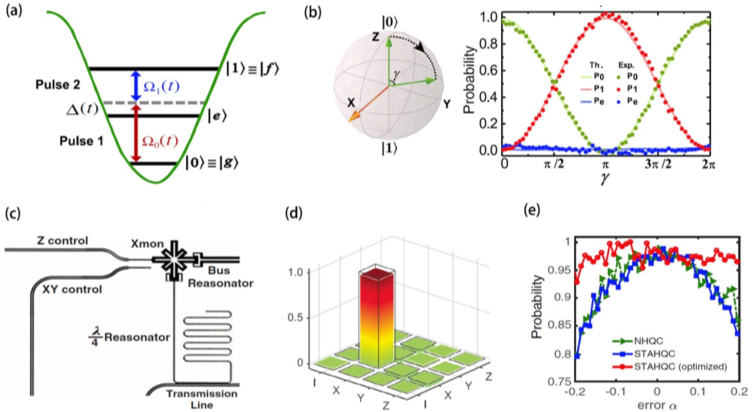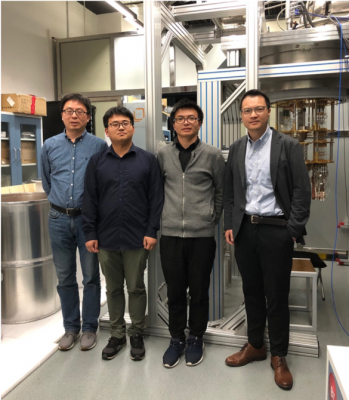Quantum computation is a new type of computational model based on the regulation of quantum mechanics to control quantum information units. It is one of the hotspots in the world’s science and technology frontier. Its potential applications are expected to have a profound impact on our society.
A team led by Southern University of Science and Technology (SUSTech) Department of Physics Associate Professor Yung Man-Hong worked with the Shenzhen Institute of Quantum Science and Engineering to develop a new scheme for non-adiabatic holonomic quantum computation, called NHQC+, that can be optimized. Their research was published in top international physics journal, Physical Review Letters, titled “Plug-and-Play Approach to Nonadiabatic Geometric Quantum Gates.”

The illustration of our proposed implementation:
(a) Schematic of combining various optimal control pulses with geometric quantum computation in our scheme (b) Schematic of different path for GQC (c) The level structure and coupling configuration for single-qubit operations with a solid-state NV center (d) Conceptual explanation for geometric quantum operation.
Implementing high-fidelity logic gates is the key to achieving large-scale quantum computation. Conventional quantum logic gates are based on the control of dynamic phase and are therefore very sensitive to control noise. Geometric quantum computation is a quantum computing strategy that uses geometric phase to realize quantum logic gate operation. It is characterized by the use of the overall nature of geometric phase to avoid the influence of some local noise on quantum operations, thus realizing high-fidelity quantum logic gates. Therefore, quantum manipulation based on geometric phase is a very important research topic in the field of quantum information processing.

NHQC+ breaks the coupling pulse of different energy levels in the previous holonomic quantum computation must be synchronized and the pulse area must be fixed. Specifically, our schemes allow geometric quantum computation to be combined with optimal control theory and greatly improve the robustness of geometric quantum gates to system noise. It is possible to further expand to geometric quantum computation that can be combined with pulse shaping technology. This extensible approach of geometric quantum computation can be applied to various physical platforms such as superconducting qubits, nitrogen-vacancy centers and trapped ions.

Bao-Jie Liu, a PHD student of 2018, was the first authors of the paper. Man-Hong Yung, Zheng-Yuan Xue (South China Normal University) and Xin Wang (City University of Hong Kong) were the corresponding authors.
This work was supported by the National Natural Science Foundation of China, the Natural Science Foundation of Guangdong Province, the Guangdong Innovative and Entrepreneurial Research Team Program, and the Shenzhen Municipal Science and Technology Innovation Commission.
Original article: https://journals.aps.org/prl/abstract/10.1103/PhysRevLett.123.100501
Previous article: https://journals.aps.org/prl/abstract/10.1103/PhysRevLett.122.080501
Proofread ByChris Edwards
Photo ByDepartment of Physics